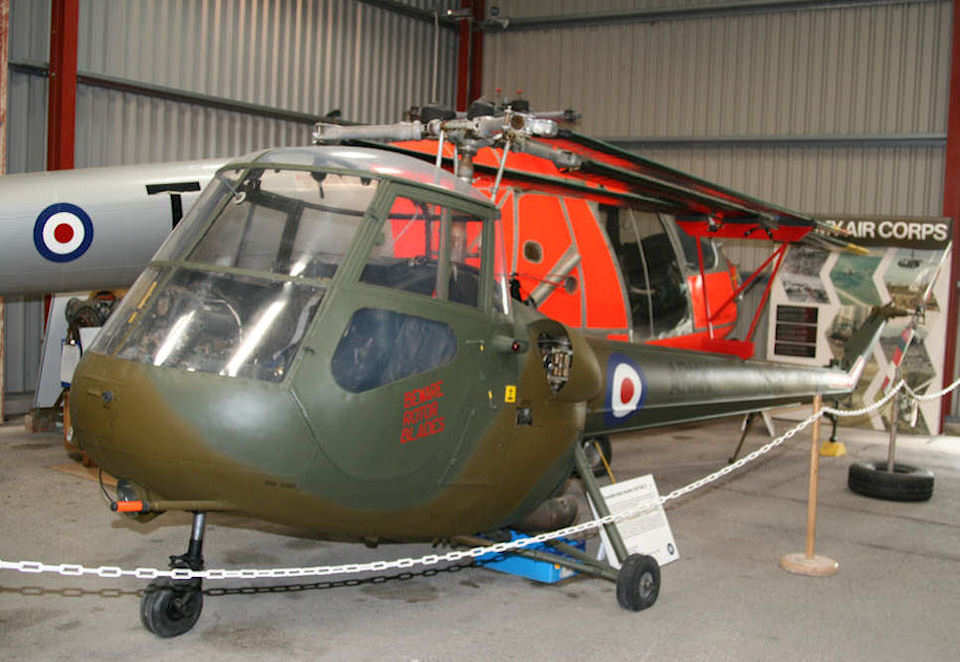The Saunders-Roe Skeeter is a noteworthy helicopter in the history of British aviation, representing an important step in the development of rotary-wing aircraft during the mid-20th century. Developed by Saunders-Roe, the Skeeter was primarily designed for military use, including reconnaissance, training, and light transport roles. Despite facing numerous developmental challenges, the Skeeter eventually became a reliable and effective helicopter, influencing future designs.
Design and Development
The origins of the Skeeter can be traced back to the work of Austrian engineer Raoul Hafner, who had been pioneering rotary-wing aircraft in Britain. Hafner’s work led to the formation of the Helicopter Division at the British aircraft company Cierva Autogiro Company, which was later acquired by Saunders-Roe in 1948.
The Skeeter’s development began with the Cierva W.14 Skeeter prototype, which first flew in 1948. Early models faced significant challenges, particularly with stability and reliability. The first prototype, powered by a Gipsy Major engine, exhibited inadequate performance and mechanical issues. These setbacks necessitated substantial redesigns.
In the early 1950s, Saunders-Roe undertook significant modifications to address these issues. The Skeeter AOP.6 (Air Observation Post) version emerged, featuring improved rotor dynamics, a more reliable de Havilland Gipsy Major 215 engine, and a re-engineered fuselage. These changes significantly enhanced the helicopter’s stability, performance, and overall reliability.
Features and Specifications
The Saunders-Roe Skeeter had several notable features and specifications that made it suitable for its intended roles:
- Engine: The Skeeter AOP.12, one of the later and more advanced versions, was powered by a de Havilland Gipsy Major 235 engine, producing approximately 200 horsepower. This engine provided the necessary power for improved performance and reliability.
- Rotor System: The helicopter had a two-bladed main rotor and a two-bladed tail rotor, designed for simplicity and efficiency. The main rotor’s design was critical to achieving stable flight characteristics.
- Fuselage: The Skeeter featured a streamlined fuselage with a fully enclosed cockpit, capable of seating a pilot and an observer or passenger in a tandem configuration. This design allowed for excellent visibility, which was crucial for reconnaissance and observation missions.
- Performance: The Skeeter had a maximum speed of around 104 miles per hour (167 kilometers per hour) and a range of approximately 250 miles (400 kilometers). It could operate at altitudes up to 10,000 feet (3,050 meters).
Operational History
The Skeeter saw limited but significant operational use, primarily with the British Army and the Royal Air Force (RAF). It was used for various roles, including reconnaissance, artillery spotting, and training.
British Army
The British Army utilized the Skeeter AOP.6 and AOP.12 models in the 1950s and 1960s. These helicopters served as air observation posts, providing valuable reconnaissance and artillery spotting capabilities. The Skeeter’s ability to hover and maneuver in confined spaces made it particularly useful for these tasks.
Royal Air Force
The RAF employed the Skeeter primarily for training purposes. Its relatively simple design and stable flight characteristics made it an ideal platform for training new helicopter pilots. The Skeeter’s use in this role helped lay the groundwork for the RAF’s future rotary-wing operations.
Legacy and Impact
Although the Saunders-Roe Skeeter did not achieve widespread use or large production numbers, its development and operational history left a lasting impact on British helicopter aviation. The challenges faced and overcome during the Skeeter’s development provided valuable lessons for future helicopter designs. The experience gained from the Skeeter program influenced the design and development of later, more advanced helicopters.
Moreover, the Skeeter represented a significant milestone for Saunders-Roe, showcasing the company’s capability to design and produce effective rotary-wing aircraft. This experience contributed to the broader advancement of helicopter technology in the United Kingdom.
Conclusion
The Saunders-Roe Skeeter holds an important place in the history of British aviation as a pioneering helicopter that helped pave the way for future developments in rotary-wing technology. Despite its early challenges, the Skeeter’s eventual success as a reliable and effective helicopter demonstrated the potential of rotary-wing aircraft for military and civilian applications. The lessons learned from the Skeeter’s development continue to inform and inspire helicopter design and engineering today.

